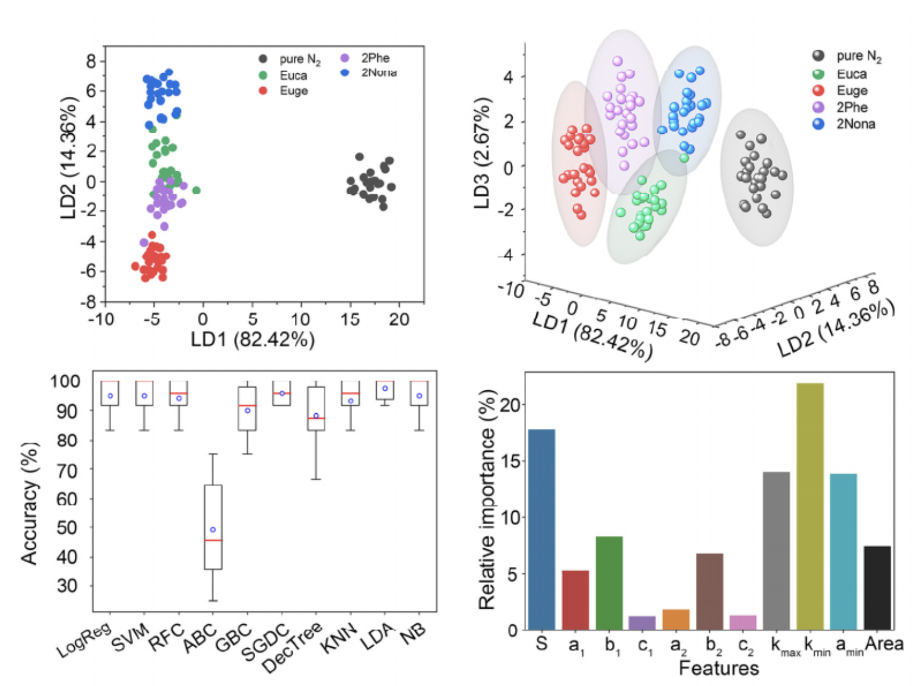Olfaction is an evolutionary old sensory system, yet it provides sophisticated access to information about our surroundings. Inspired by the biological example, electronic noses (e-noses) in combination with efficient machine learning techniques aim to achieve similar performance and thus digitize the sense of smell. Despite the significant progress of e-noses, their development remains challenging due to the complex layout design of sensor arrays with a multitude of receptor types or sensor materials, and the need for high working temperature. In the current work, we present the discriminative recognition of odors utilizing graphene single-channel nanosensor-based electronic olfaction in conjunction with machine learning techniques. Multiple transient features extracted from the sensing response profile are employed to represent each odor and used as a fingerprint of odors. The developed electronic olfaction prototype exhibits excellent odor identification performance at room temperature, maximizing the obtained results from a single nanosensor. The developed platform may facilitate miniaturization of e-nose systems, digitization of odors, and distinction of volatile organic compounds (VOCs) in various emerging applications.

Olfaction is an evolutionary old sensory system, yet it provides sophisticated access to information about our surroundings. Inspired by the biological example, electronic noses (e-noses) in combination with efficient machine learning techniques aim to achieve similar performance and thus digitize the sense of smell. Despite the significant progress of e-noses, their development remains challenging due to the complex layout design of sensor arrays with a multitude of receptor types or sensor materials, and the need for high working temperature. In the current work, we present the discriminative recognition of odors utilizing graphene single-channel nanosensor-based electronic olfaction in conjunction with machine learning techniques. Multiple transient features extracted from the sensing response profile are employed to represent each odor and used as a fingerprint of odors. The developed electronic olfaction prototype exhibits excellent odor identification performance at room temperature, maximizing the obtained results from a single nanosensor. The developed platform may facilitate miniaturization of e-nose systems, digitization of odors, and distinction of volatile organic compounds (VOCs) in various emerging applications.
